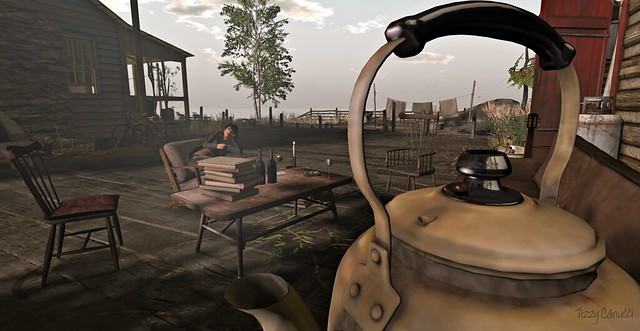Baby’s Ear is the latest creation from Neva Crystall. There are now only two days left to enjoy it before the fortnight window closes. I took the photos about 10 days ago, but real life has been so hectic.
It is, in many ways, characteristic Neva. Cool, subdued colours, where land meets the sea. There’s domesticity, caught in time; kitchens and living spaces. There’s a kettle boiling on a gas ring. This is a lived-in landscape, things have been left and time is stilled – it has not been left long, and life is ready to be resumed soon.

Neva’s blog is subtitled: Neva Imagery, Lived-In Contemporary and this is very much the theme. But is it exactly ‘contemporary’? Shift back on your chair, and you can see this place is mediated by modernity, if not post-modernity – screens, keyboards, electricity, servers and a very modern understanding of relating to others through and in this technology. It is, as I talked about in an earlier blog post, a kind of ‘playful nostalgia’; most people have never seen fish drying on racks let alone gutted one and hung it up to dry, nor boiled a kettle in the open using bottled gas, nor washed in a tin bath with carbolic soap. But we like the idea of this being around us while we lounge on chairs by piles of books with a glass of wine, which is certainly something we know and would like to have more time for. There is nary a smartphone or laptop in sight; it longs for the sharing information amongst ourselves rather than resorting to Google. It is as if the unfamiliar gives time and space, and permission, to do what we’d like to do.

This is a nostalgia reconstructed in the present, playful not serious; there is a post-modern knowingness and irony in watching steam boiled by gas delivered by broadband and electricity. In this, ‘the past is sensuously rather than critically evoked’1 and it is that knowingness saves it from being twee or trite. The process is one of reconnection, of the personal and memory, and of the past to present.
- M. Pickering and E. Keightley, ‘The Modalities of Nostalgia’, Current Sociology, 54 (2006), 919–41 (p. 930) http://dx.doi.org/10.1177/0011392106068458.
